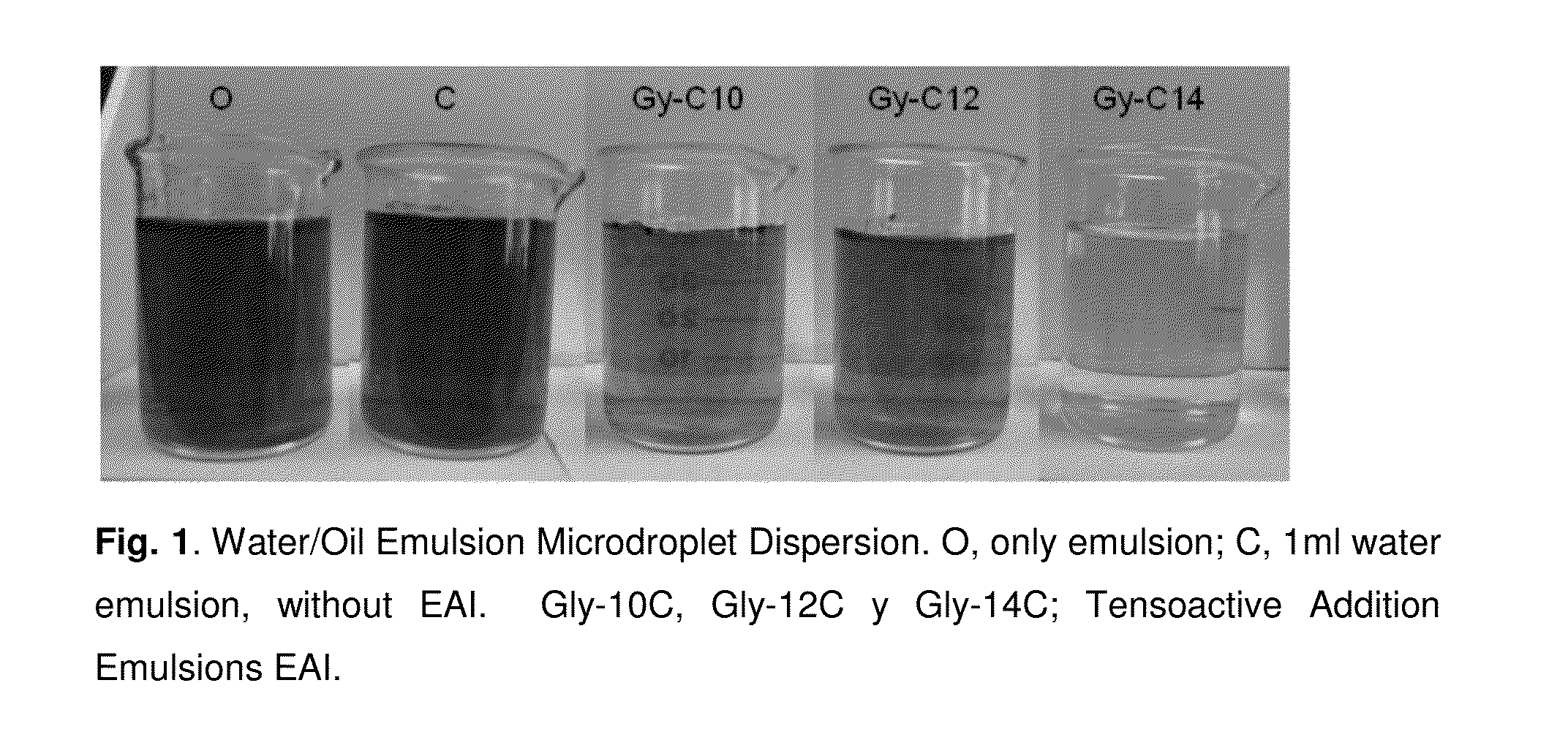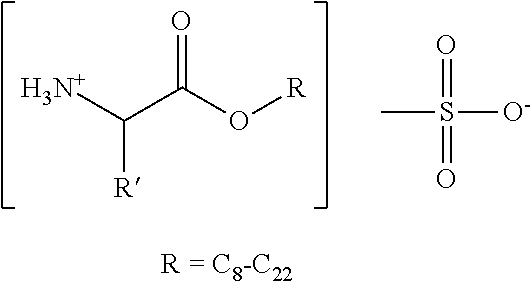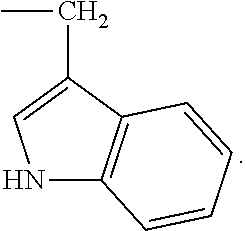Process for demulsification of crude oil in water emulsions by means of natural or synthetic amino acid-based demulsifiers
- Summary
- Abstract
- Description
- Claims
- Application Information
AI Technical Summary
Benefits of technology
Problems solved by technology
Method used
Image
Examples
example 1
[0041]Destabilization of O / W emulsions with commercial surfactants and demulsifiers of IAAE at 30° C.
[0042]Emulsion Preparation
[0043]To prepare the O / W emulsion, heavy crude oil with 21.1 API density was used as the oil phase, and contained asphaltenes and sulfur in amounts of 13.6 and 3.4%, respectively. An aqueous saline solution at a concentration of 23.5 g / L of NaCl was used and the commercial emulsifier based on alkyl phenol ethoxylate (15 moles of ethoxy groups) was employed. Subsequently an O / W emulsion was prepared using a homogenizer IKA Labortechnik being the water content in the emulsion of 30% (w / w).
[0044]Demulsification Test
[0045]The O / W emulsion was subjected to a process of chemical demulsifcation by adding the demulsifier agents and using graduated tubes with a conical bottom for easiness of water volume determination. Eight IAAE compounds were used as amino acid-based demulsifier. Likewise, eleven demulsifiers which are commercially available were selected and also ...
example 2
[0049]Application of Gly-10C, Gly-12C and Gly-14C as demulsifiers of O / W emulsions at different concentration and temperature between 30-60° C.
[0050]O / W Emulsion Preparation
[0051]The same crude oil and procedure for O / W emulsion preparation described for the example 1 was used.
[0052]Demulsification Test
[0053]Three amino acid-based demulsifiers Gly-10C, Gly-12C and Gly-14C of the methanesulfonate series were evaluated at different concentrations and test temperature. The initial content of water in the O / W emulsion (as measured by Karl-Fisher) as in Example 1, was of the order of 30% and the salinity of the aqueous phase of 23.5 NaCl.
[0054]The method of preparation and addition of the amino acid-based demulsifiers is the same as described in Example 1, by adjusting to the required concentration for each initial O / W emulsion according to the conditions indicated in Table 3. Subsequently, the emulsions were stored for 24 hours at the indicated temperatures.
TABLE 3Conditions for applyin...
example 3
[0059]Employing amino acid-based demulsifier Gly-14C and further application of an electric field.
[0060]O / W Emulsion Preparation
[0061]The emulsion was prepared in the same way as described in example 1.
[0062]Demulsification Test
[0063]Gly-14C demulsifier dosed at concentrations between 0-900 ppm was used for destabilization and dehydrating of O / W emulsion. The initial content of total water in the O / W emulsion was approximately 31-33% (as measured by Karl-Fisher).
[0064]An electrolytic cell consisting of a glass vessel, two carbon steel electrodes (anode and cathode) of 2 cm2 are connected to a power source of direct energy GwINSTEK CPC-30300. In the electrolytic cell, the O / W emulsion and the Gly-14C demulsifier were poured and an electric current of 30 Volts was applied for 6-10 min. The changes in water content of separated crude oil (by Kari-Fisher titration) were measured at 15 minutes and after 24 hours of electric field at room temperature.
[0065]Results. Table 5 includes obtain...
PUM
 Login to View More
Login to View More Abstract
Description
Claims
Application Information
 Login to View More
Login to View More - R&D
- Intellectual Property
- Life Sciences
- Materials
- Tech Scout
- Unparalleled Data Quality
- Higher Quality Content
- 60% Fewer Hallucinations
Browse by: Latest US Patents, China's latest patents, Technical Efficacy Thesaurus, Application Domain, Technology Topic, Popular Technical Reports.
© 2025 PatSnap. All rights reserved.Legal|Privacy policy|Modern Slavery Act Transparency Statement|Sitemap|About US| Contact US: help@patsnap.com



